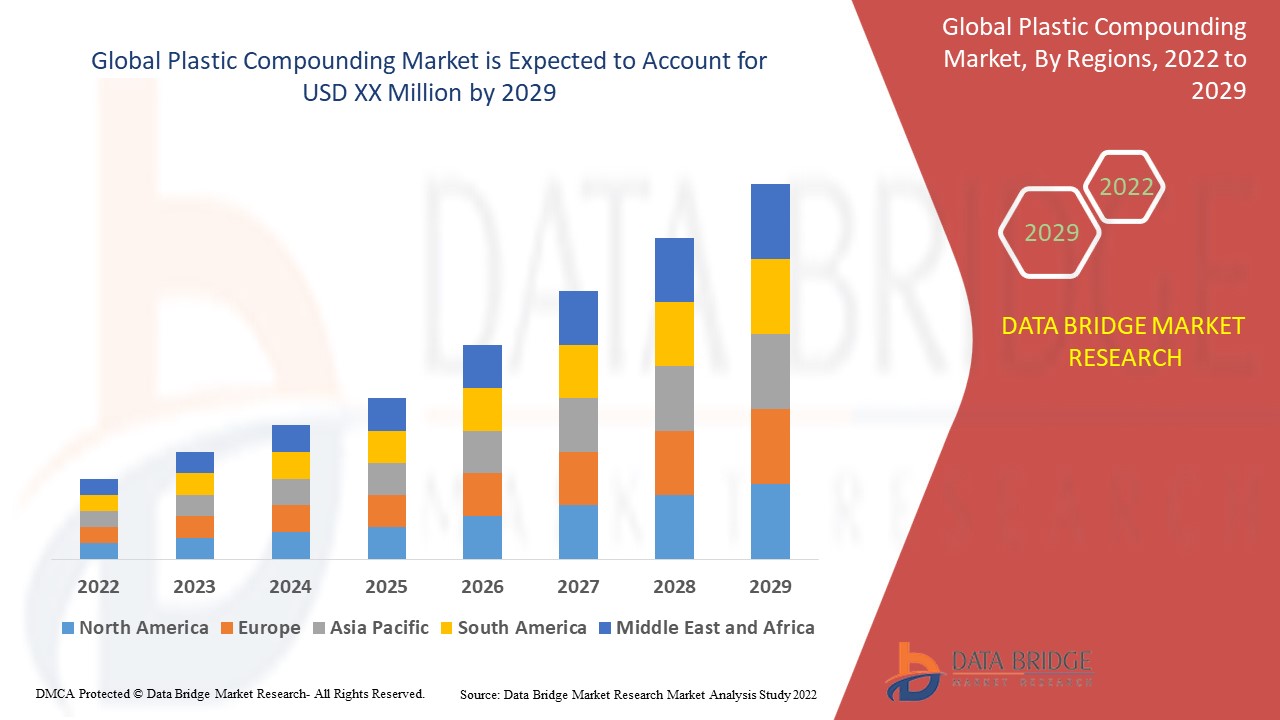Last Updated on April 20, 2024 by Saira Farman
Fluctuations or volatility in the price of raw materials and the high substitutability of their bio-based equivalents are the main factors that might have a detrimental effect on the global plastic compounding business.
The worldwide plastic compounding Market is expected to benefit from a shift in consumer preference toward bio-based and recycled plastics. The expansion of the worldwide plastic compounding market, however, is expected to be hampered by strict rules placed on the usage of plastic.
Definition
In the electronic and electrical sectors, plastic compounds are frequently employed for antistatic and electromagnetic shielding purposes. In the automobile sector, they are also replacing metal parts. By making the vehicle lighter overall, this has contributed to an increase in vehicle safety. In the automotive sector, plastic compounding has also reduced carbon emissions and improved vehicle performance and fuel economy, which is helping the market for plastic compounding develop.
Challenges for key Players in Plastic Compounding Market
- Fluctuation or volatility in raw material prices
The development of the plastic compounding industry, which is predict to be encourage by future supply and demand shifts that is expect to make plastics prices extremely volatile, may be hamper by these fluctuating petrochemical costs. The majority of raw materials is create by petrochemicals’ downstream operations. The major causes of crude oil price volatility include political unrest, imbalances in supply and demand, and seasonal changes. The market is also very interconnect, from the sourcing of raw materials through the distribution networks.
- High potential for replacement with bio-based alternatives
The use of bio-based polymers has been encouraged by a variety of restrictions placed by national governments on the use of polymers made from petrochemicals in various end-use sectors. Instead of using fossil fuels, these bio-compound polymers are produced from plants or other sustainable resources. Polymers generated from bio-based sources, such as Polybutylene Succinate (PBS), Polyhydroxyalkanoate (PHA), and Polylactic Acid (PLA), have demonstrated outstanding biodegradability, which their corresponding products made from petrochemicals severely lack. As a result, these products are becoming increasingly popular, particularly for biomedical and agricultural uses.
Market Description
- In the electronic and electrical sectors, plastic compounds are frequently employed for antistatic and electromagnetic shielding purposes. In the automobile sector, they are also replacing metal parts. By making the vehicle lighter overall, this has contributed to an increase in vehicle safety. In the automotive sector, plastic compounding has also reduced carbon emissions and improved vehicle performance and fuel economy, which is helping the market for plastic compounding develop.
- The worldwide plastic compounding market is significantly influenced by the rising demand for plastic compounding in infrastructure projects. The physical characteristics of plastic compounds and a movement in consumer demand toward the use of lightweight materials for the manufacture of automotive components are anticipated to drive the expansion of the global plastics industry.
- In the forecast period of 2022 to 2029, the global plastic compounding market is anticipated to experience significant growth. According to Data Bridge Market Research’s analysis, the market will expand at a CAGR of 4.8% from 2022 to 2029.
Key players in Plastic Compounding Market
- Key companies in the Global Plastic Compounding Market include BASF SE, Saudi Basic Industries Corporation (SABIC), Dow Inc., LyondellBasell Industries Holdings B.V., Kraton Polymers, Inc., DuPont, RTP Company, Inc., S&E Specialty Polymers, LLC and Asahi Kasei Plastics.
- Some catalysts can boost resin output while also causing quality problems and poor product performance. The performance, adaptability, and yield of polyethylene and other polymer resins will thus be improved by continually developing polymerization catalyst technologies, creating a profitable opportunity for the leading companies to boost their output and compete favourably on the market.
- The United States, Canada, Mexico, Russia, the United Kingdom, Belgium, Germany, Italy, France, Spain, the Netherlands, Turkey, Luxembourg, Switzerland, and the rest of Europe are just a few of the nations that participate in the global plastic compounding market. Other nations include China, India, Indonesia, Malaysia, Thailand, Japan, South Korea, Philippines, Singapore, Australia & New Zealand, and the rest of Asia-Pacific, as well as Saudi Arabia, the United Arab Emirates, South Africa, Egypt, Israel, and the rest
For more detailed information visit
https://www.databridgemarketresearch.com/reports/global-plastic-compounding-market
About Us
A global provider of market information, Data Bridge Market Research offers corporate consulting services as well as syndicated research studies. For thousands of decision-makers, our unique combination of quantitative forecasting and trends research offers forward-looking insights. To obtain and evaluate data, our knowledgeable team of analysts, researchers, and consultants uses confidential data sources, a range of technologies, and varied approaches.
A group of research specialists work regularly to update and amend our data library so that it always represents the most recent facts and trends. Data Bridge Market Research, with its extensive research and analytical capabilities, uses rigorous primary and secondary research procedures to provide unique data sets and research materials for business reports.







